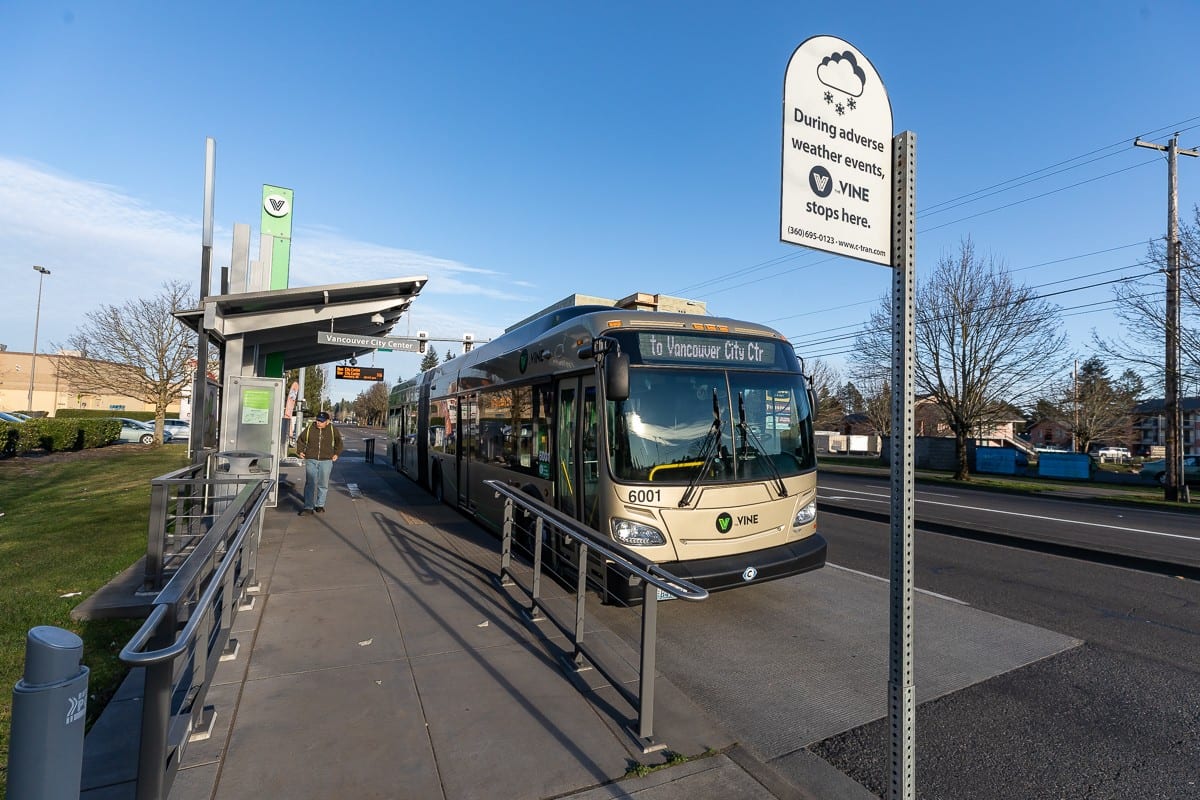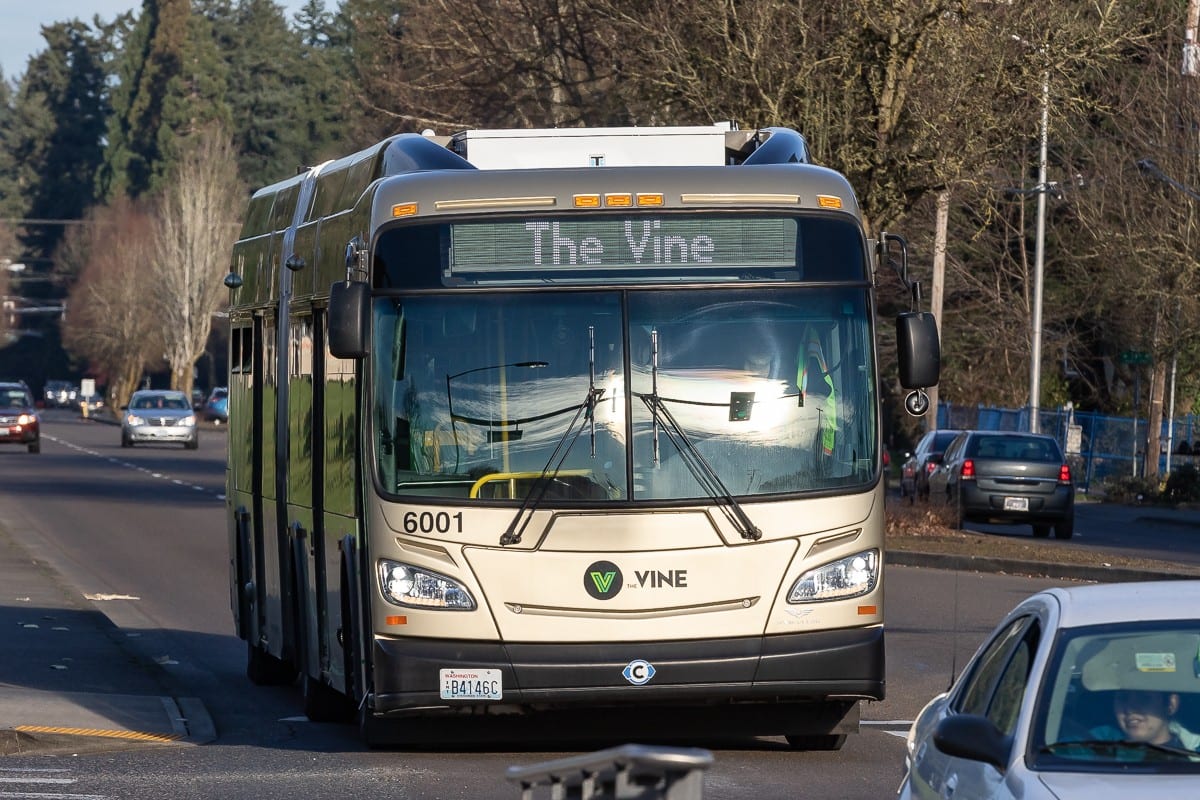Agency ridership is down 55.4 percent, which C-TRAN reports is the smallest decrease in ridership of any major agency in Washington state
VANCOUVER — In his presentation at a Board of Directors meeting this week, C-TRAN Chief Executive Officer Shawn Donaghy stressed one point above all others to board members as he provided an update on the impact the coronavirus pandemic has had on the transit agency.

“It became very clear through this pandemic just how critical public transit is to the fabric of Clark County,’’ Donaghy said. “It is important to not miss the point that we are sorely needed here in Clark County.’’
Donaghy stressed that theme more than once as he provided board members some grim numbers that provided extensive insight into how C-TRAN has been impacted by COVID-19 and stay-at-home orders in Washington state.
For the week ending May 2, 2020, Donaghy reported that C-TRAN ridership is down 55.4 percent compared to the same week in 2019. He said C-TRAN has the smallest decrease in ridership of any major agency in Washington state. The organizational update provided by C-TRAN indicated that the next closest agency is at 65.4 percent.
Donaghy also provided a deeper dive into that decrease in ridership, offering data that included the fact that the decrease in daily ridership for local service in Clark County went from 82 percent in 2019 to 39.5 percent in 2020 compared to a decrease of commuter ridership from 14 percent in 2019 to 90 percent in 2020. The decrease in paratransit ridership went from 4 percent in 2019 to 81 percent in 2020.
“I think that speaks volumes of the necessity that C-TRAN has in Clark County for our citizens that when other agencies are experiencing a great deal of ridership decline from our local ridership we’re less than 40 percent on our ridership decline,’’ Donaghy said.

Despite the 55.4 percent decrease in overall ridership, C-TRAN continues to operate at as close to a full-service schedule as possible.
“To comply with physical and social distancing requirements, it is necessary to ensure that we have as close to a full local fixed route schedule in place,’’ Donaghy said. “There are routes that continue to experience overcrowding as a result of current guidelines. We have about five or six routes that every single day we experience an issue where we have to ask riders to wait for the next bus because they are overcrowded at our current ridership requirement.’’
Donaghy also reported that as the state begins to move into Gov. Jay Inslee’s four-phased to reopen Washington, there are indications that C-TRAN’s ridership is beginning to return.
“Ridership over the past couple of weeks has continued to increase and I think we’re going to continue to see that as weeks go on,’’ he said. “So, it’s important to have as much service out there as possible to maintain that physical distancing requirement.’’
Budget update
C-TRAN will move to an annual budget for the 2021-2022 fiscal year to provide a greater ability to manage future years. The agency also reported that it will potentially extend annual budget management through 2022-2023 depending on economic rebounding.
The agency has rerouted $5.8 million in savings from the first year (2019) of its biennial budget cycle into reserves. In March (2020), C-TRAN’s reserves balance was $79,396,406. The agency is required to keep 90 days or working capital, which amounts to $17,420,830.
C-TRAN is allotted “Formula Funding” each year based on factors such as:
• Bus revenue/passenger miles
• Fixed guideway revenue
• Population
• Population density
• Ridership
• Mode of propulsion (electric, CNG, diesel, etc.)
C-TRAN’s allotment of “Normal Formula Funding’’ for 2020 was $6,627,206. In addition to that, C-TRAN received $15,817,139 in “Coronavirus Aid Funding” for 2020. The “Cares Act’’ funding was distributed from a $25 billion federal allotment to sustain to the extent possible the service level of public transit agencies and offset local revenue loss against operating expense and deferred maintenance.
“So essentially, what we’re able to do is we are able to draw down money from this $15 million and be able to hold that local money here in a bank to be able to offset any potential losses we may have in revenue or sales taxes,’’ Donaghy explained. “We are very fortunate to have the $15.8 million to try to shore up any sales tax losses.’’
Donaghy said C-TRAN has used the “Cares Act” funds first over its own reserves.
“In fact for the month of April, we drew down about $5.8 million of that for the first three months,’’ he said. “That was another $5.8 million we were able to put in the bank locally or use that to supplement whatever loss we would have in sales tax or local fares.
Donaghy also pointed out that there is currently a “Heroes Act Bill’’ in the Senate, proposed to provide another $13-15 billion for public transit, which he said is “largely focused on protecting wages, helping states and local entities with shortfalls in the budget.’’
Spending update
C-TRAN has placed all non-essential spending on hold. The agency is continuing with some capital projects including the Mill Plain Bus Rapid Transit. The original cost of the “Mill Plain Vine,’’ as it is called, was expected to be about $50 million, which was reported to be the maximum amount C-TRAN could spend and still qualify for FTA loans. Local costs were expected to be $22 million. The projected opening date is in 2023.
C-TRAN has put many of its capital projects on hold. The projected deferment for 2021-2022 is a little more than $32 million.
C-TRAN also currently has a hiring freeze in place, unless the positions are determined to be detrimental to service. In January of 2020, C-TRAN had 470 employees. In April, the workforce was down to 452 employees, a savings of $70,000 per month including benefits.
C-TRAN also currently has 75 employees on voluntary leave, which amounts to about 20 percent of its workforce.
The total FTE savings in 2019 was $720,472 (which does not include savings in fringe benefits). Through March of this year, Donaghy said, “We have already eclipsed for the year, the $720,000 last year that we saved from FTEs, not to mention some savings in fringe benefits as well.
“We anticipate that number to continue through until we’re at a place where we need to recall everyone to restore full service,’’ Donaghy said. “We don’t necessarily have a date on that yet. I think it’s largely contingent on what the state does and what we want to do as a local entity.’’
Donaghy said he anticipates C-TRAN will be forced to recall some of those 75 employees “in the next 3-4 weeks.’’
’




